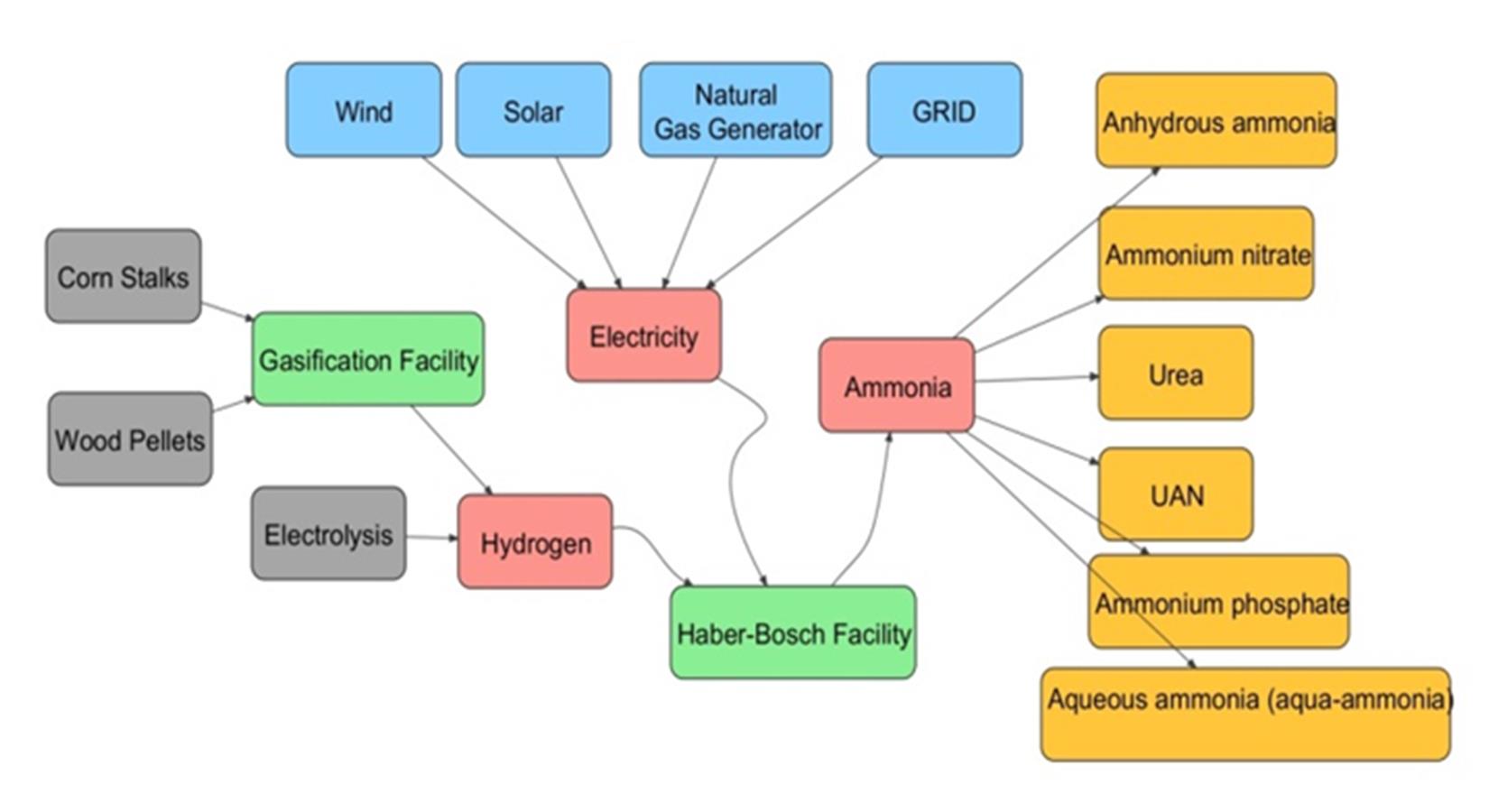The West Central Research and Outreach Center (WCROC) project team has a novel approach to address energy consumed in nitrogen fertilizer production. WCROC is operating a unique pilot plant which uses wind energy to produce nitrogen fertilizer (anhydrous ammonia). The team is evaluating the proper sizing and configuration of a renewable nitrogen fertilizer production facility in order to move the technology toward commercialization. A green nitrogen fertilizer source is a key element to improve the carbon footprint within production agriculture.
Minnesota imports most of the ammonia fertilizer used by farmers. We are investigating the technical feasibility and economic profitability of a small-scale distributed ammonia production system.
The Renewable Hydrogen and Ammonia Pilot Plant located at the WCROC is co-located with a utility-scale 1.65 MW Vestas wind turbine. Approximately 10 percent of the power from the wind turbine is used in the production of hydrogen and anhydrous ammonia.
The production of ammonia involves the Haber-Bosch process which combines nitrogen and hydrogen to produce ammonia. The illustration below shows the several options that exist in terms of different sources of hydrogen (in gray), different sources of energy (blue) and different forms of fertilizer (orange).

By learning how to store wind power for hydrogen production, the WCROC can provide a renewable, plentiful and clean energy source.
More information about the wind to hydrogen/ammonia project at the WCROC can be found by viewing the hydrogen/ammonia brochure (PDF).
